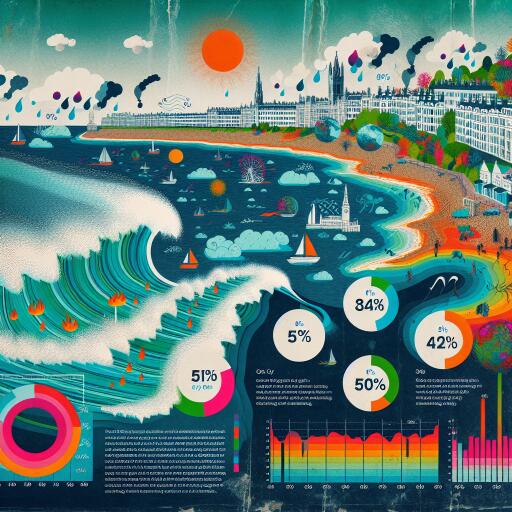
Report Explores How Climate Change Will Reshape Brighton and Hove
A recent in-depth analysis has cast light on the daunting challenges that climate change is expected to bring to Brighton and Hove in the forthcoming years. The investigation into the city’s climate vulnerabilities and risks paints a stark picture, forecasting hotter temperatures, increased flooding, and the rise of sea levels as imminent threats to the area’s ecological balance, infrastructure, public health, and economic sectors.
The comprehensive study warns of a grim future where the local fauna could face dramatic population decreases due to more frequent and extreme hot spells, potentially leading to local species extinctions. One striking revelation from the report is the anticipated rise in both pests and invasive species, including ticks bearing Lyme disease, attributed to less frost in winters and warmer, damper conditions overall. This could pose a significant threat not just to wildlife but to human health as well.
Drought spells, growing in frequency, present another critical concern for the city, potentially impacting the water supply. Brighton and Hove’s reliance on groundwater sources might buffer the effect of reduced rainfall, but the situation demands close monitoring and efficient management to mitigate adverse outcomes.
Moreover, flooding already signals a direct threat to over 30,000 homes within the city, singling out areas such as Aldrington, Patcham, and Falmer as high-risk zones. Notably, up to 30 percent of the strategic road network and seven percent of railway lines are highly susceptible to groundwater flooding, including significant landmarks and infrastructure like the University of Sussex, the A27, the Amex Stadium, and key commercial zones.
The perils of rising sea levels also loom large, with predictions of saltwater encroaching on the city’s chalk aquifer and the gradual erosion of its distinctive shingle beaches. Such changes not only threaten the city’s natural landscape but could profoundly affect the local community and economy.
In response to the growing crisis, Brighton and Hove City Council took a decisive step in 2018 by declaring a climate and biodiversity emergency. They set an ambitious target to achieve carbon neutrality by 2030, showcasing their commitment to addressing these environmental challenges head-on.
Expressing concern over the report’s findings, Caroline Lucas, the Green MP for Brighton Pavilion, emphasized the dire consequences of unchecked climate change on the city. Recalling recent extreme weather events that led to flooding and sewage issues, Lucas highlighted the broad spectrum of risks—from water scarcity and increased fire hazards to health problems and coastal erosion—threatening this vibrant community.
Lucas stressed the importance of continuous advocacy for aggressive climate action, both at the local and national levels, urging for immediate and sustained efforts to avert the most severe impacts of climate change.
The findings underscore the urgency with which Brighton and Hove, alongside communities worldwide, must address the multifaceted challenges posed by climate change. As the global clock ticks down, the report serves as a clarion call for proactive measures to safeguard our environment, health, and future prosperity.





Leave a Reply